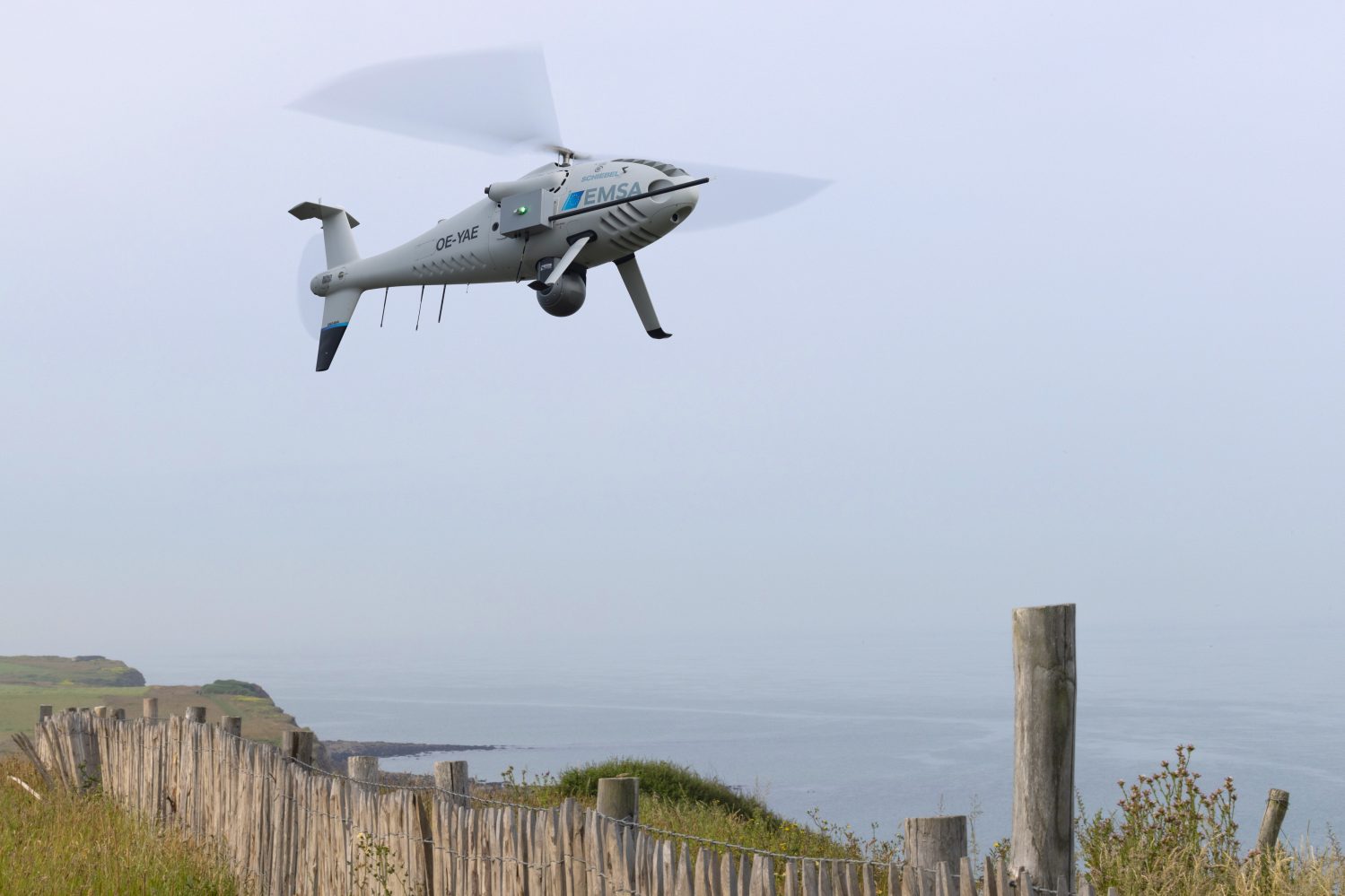
The European Maritime Safety Agency (EMSA) is deploying another aerial drone to monitor boat activity in France’s English Channel waters, expanding the number of UAVs the organization has scouring shipping lanes for – among other things – emissions violations.
As it has frequently done in keeping tabs on ship activity from on high, the EMSA has contracted Vienna-based Schiebel to supply its S-100 drones for use in the added missions from France’s CROSS Gris-Nez coast guard and naval observation station.
Located mid-way between Calais and Boulogne-sur-Mer, the base provides direct access to what has been described as one of the most bustling shipping lanes on the planet. In addition to using onboard sniffer sensors to collect fuel emissions from vessels to ensure compliance with 2020 rule restrictions, the UAV’s video feed also has the capacity to permit authorities to keep watch of other activity, including fishing craft observation of catch quotas.
Read: EU renews drone use to detect violations of ship emissions
The EMSA has been orchestrating deployment of drones over European Union waters in increasingly greater numbers over the past half decade. That’s been especially so since reduced fuel emissions were put into place in 2020 by the International Maritime Organization, which seeks to shrink the large role global cargo shipping plays in climate change.
The new deployment to CROSS Gris-Nez is only its most recent to France, in addition to numerous missions organized from Spain, Italy, Denmark, Lithuania, Germany, and other nations with Baltic, Atlantic, and Mediterranean coastlines.
As in France this time, the EMSA has repeatedly called upon Schiebel and its S-100 drones to carry out those aerial maritime patrols. The autonomous UAV has a maximum flight capacity of 200 kilometers, or six hours with a normal heavy fuel tank – 10 hours with a larger reserve fitted.
The dual rotor craft functions at day and night in virtually all weather conditions, and broadcasts emission samples its sniffer sensor has taken back to command posts. Real-time analysis for potential infraction detection onshore allows operators to proceed with identification of non-compliant boats, and preparation of possible fines.
Read more: Denmark to deploy drones to detect shipping sulphur emission levels
Video and optional sensors added upon client request also permit the craft to gather data on other kinds of activity potentially violating environmental norms, and keep watch over tightly regulated EU fishing quotas, traffic between national and international waters, and irregular or possibly illegal actions at sea.
Hans Georg Schiebel, chairman of the Schiebel Group, says deployment of the S-100 to France’s Atlantic observation post is another indication of how his company’s UAVs – and drones in general – are providing vital aerial support to the EMSA’s efforts to keep the seas below safe.
“This area of sea is one of the busiest shipping lanes in the world, where 24/7 monitoring of all maritime activities is essential,” he says. “Schiebel’s S-100 has supported numerous maritime authorities to date, with EMSA being one of our most prestigious customers.”
FTC: We use income earning auto affiliate links. More.




Comments